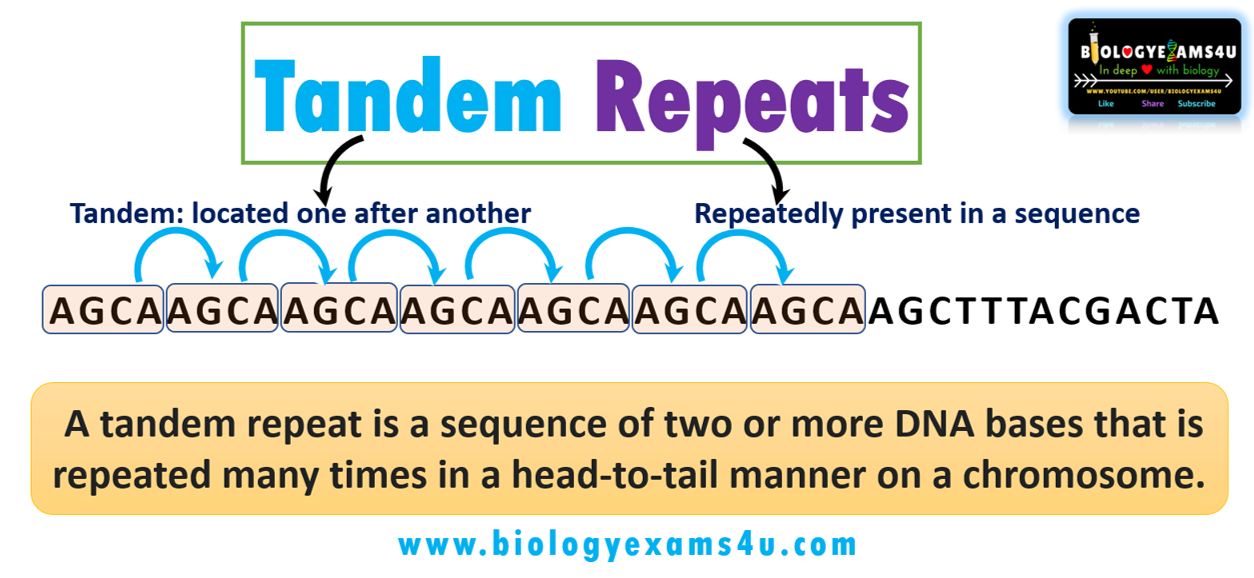MCQ on Short Tandem Repeats
1. Short Tandem repeats (STR) in DNA are
a) Sequence of two or more bases that is repeated many times discontinuously on a chromosome
b) Sequence of two or more bases that is repeated many times one after another tandemly on a chromosome
c) Noncoding highly repetitive sequences
d) All of the above
2. All the following refers to STR except
a) microsatellites
b) Simple sequence repeats
c) Short tandem repeats
d)
Variable number
of tandem repeats (VNTR)
3. In Human genome, STR accounts approximately
a) 10%
b) 50%
c) 7%
d) 3%
4. Which human chromosome has the highest density
of STR?
a) Chromosome 1
b) Chromosome 21
c)
Chromosome 19
d) Chromosome 16
5. Which of the following is the most common STRs
in human genome?
a) hexanucleotide repeats
b)
dinucleotide
repeats
c) trinucleotide repeats
d) tetranucleotide repeats
6. Which of the following statement is incorrect
regarding STR?
a) STRs are present in prokaryotes and eukaryotes
b) STRs are repetitive unit of 1-6 bp
c)
STRs are
noncoding highly repetitive sequences
d) STRs are found in both coding and non-coding
regions
7. STR analysis is widely used in
a) Western blotting
b)
DNA
fingerprinting
c) Northern blotting
d) DNA footprinting
8. Which residue is abundant in STR?
a)
Adenine
b) Guanine
c) Cytosine
d) Thymine
9. D13S317 is a common STR used in the paternity testing.
In D13S317, 13 stands for
a) 13th nucleotide of DNA
b) 13th chromosome
c) 13th STR
d) Unique STR identification ID
10.
STR analysis is used in
a) Forensic analysis
b) Genetic mapping and disease diagnosis
c) Phylogenetic studies
d) All of the above
Answers
1. b) Sequence of two or more bases that is
repeated many times one after another tandemly on a chromosome
2. d) Variable number of tandem repeats (VNTR)
3. d) 3%
4. c) Chromosome 19
5. b) dinucleotide repeats
6. c) STRs are noncoding highly repetitive
sequences
7. b) DNA fingerprinting
8. a) Adenine
9. b) 13th chromosome
10.d) All of the above
